 A few years ago, I made it my New Year’s Resolution to completely cut out animal products from my diet. I had played around with a couple variations of diets for a few years in college while competing in a Division 1 rowing program—cutting out all red meat, processed meats, and chicken, and only eating fish. Essentially the only things left were the eggs, milk, and cheese. I had been hesitant because cheese was my absolute favorite thing to add to every meal. I dreamed about doing a cheese and wine tour of Europe one day—I was really in love with cheese.
A few years ago, I made it my New Year’s Resolution to completely cut out animal products from my diet. I had played around with a couple variations of diets for a few years in college while competing in a Division 1 rowing program—cutting out all red meat, processed meats, and chicken, and only eating fish. Essentially the only things left were the eggs, milk, and cheese. I had been hesitant because cheese was my absolute favorite thing to add to every meal. I dreamed about doing a cheese and wine tour of Europe one day—I was really in love with cheese.
Why and How I Did It
My motivation to go completely animal product–free stemmed from the obvious health benefits that I was learning about so quickly as I finished up my degree to become a dietitian. But it also was influenced heavily by my love for the planet (plant-based diets have an extremely low carbon footprint) and all animals (even the ones that most people consider to be food and not pets).
As you already know, the transition was very slow… over several years. I didn’t go from steak, cheesy potatoes, and a side of green beans with bacon to a full-on Buddha Bowl tofu smoothie overnight! I also researched and talked to fellow dietitians as I made the switch to make sure I was taking the appropriate steps to ensure a healthy transition as well (please don’t hesitate to reach out).
My Top Tips for Transitioning to a Plant-Based Diet
For those who are considering going plant-based, here are my tips that I’ve learned throughout the years.
Start with One Meal at a Time
Pick just one meal a day to make mostly plant-based—don’t worry about the rest of your meals and snacks yet. Instead of a fried egg and bacon breakfast sandwich, replace your bacon and egg with your favorite greens, caramelized onion, sautéed peppers, etc.
Make Your Favorite Meal Plant-based
Do you love spaghetti and meatballs and eat it multiple times a week or a couple of times a month? This is the meal to focus on! Spaghetti and the red sauce are fine as is. Now you just need to find a delicious “meatball” recipe that uses things like beans and lentils and spices and freeze some to save time for the next meal. Pizza can be delicious on its own without cheese, but you can consider adding dairy-free cheese.
Find Your Favorite Brand of Store-bought Dairy-free Cheese
My favorites… and I’ve tried them all!
- VioLife Feta Cheese (delicious on a cheese board with apple slices)
- SoDelicious Cheddar (good for pizzas)
- Miyokos (Whole Foods carries wheels of this delicious brand)
- TreeLine (small tubs of herbed cheeses that are delicious on crackers)
- Daiya Pepper Jack cheese block
There are dozens more, and many folks try making their own cheese, but if you can find just one, this makes the transition 100 times easier.
Be Prepared for Restaurants
This might mean expanding your palate and trying new places. Indian, Thai, and Ethiopian are prime examples of cuisines that highlight plant foods over animal foods. But even our favorite fast-food chains have vegan options:
- Chipotle offers sofritas (tofu).
- Burger King and White Castle offer Impossible Meat Burgers (remember, moderation is still key).
- Noble Roman’s offers vegan cheese on pizzas.
As “vegan” continues to be rather trendy, the options are endless. Don’t be afraid to create your own dish and ask for substitutions or leave things off the dish. The Happy Cow app lists vegan options all over the city.
Be Open-minded
Change is hard, especially when it comes to food. Food is something we have a strong connection to. We associate different meals with happiness, sadness, a certain holiday, or a family favorite that has been a go-to every Monday night. My family did our first entirely vegan Thanksgiving two years ago. Despite the fact that the entire immediate family had gone vegan a few years ago, many of our extended family members were not on board with this move. Expose friends, family, and new acquaintances to some of your new favorite dishes at various gatherings and you just might end up with another buddy to swap recipes with!
This blog was written by Lindsey Hehman, MA, RD, CD. To learn more about the NIFS bloggers, click here.


 Picture this: You’re sitting in the car, in stop-and-go traffic. Your mood is just shot and all you want to do is get home. Now try this: Turn up the volume on your radio and let the music take over your soul!
Picture this: You’re sitting in the car, in stop-and-go traffic. Your mood is just shot and all you want to do is get home. Now try this: Turn up the volume on your radio and let the music take over your soul! 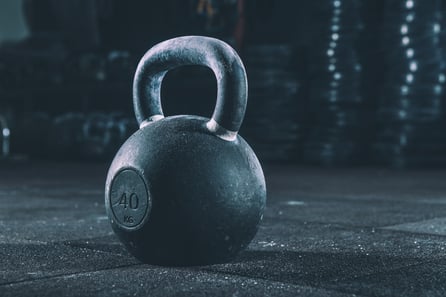 The Russian kettlebell is unique among exercise tools. It is an offset-handle weight that travels easily between the legs in a pendulum movement that can be easily seen in the kettlebell swing (two-hand and one-hand swings). If done correctly, the hips hinge straight backward as if you were trying to push a swinging door open while holding a tray. If you squat, even a little bit, there is little rearward movement and the door doesn’t open. Hip power is lost.
The Russian kettlebell is unique among exercise tools. It is an offset-handle weight that travels easily between the legs in a pendulum movement that can be easily seen in the kettlebell swing (two-hand and one-hand swings). If done correctly, the hips hinge straight backward as if you were trying to push a swinging door open while holding a tray. If you squat, even a little bit, there is little rearward movement and the door doesn’t open. Hip power is lost. 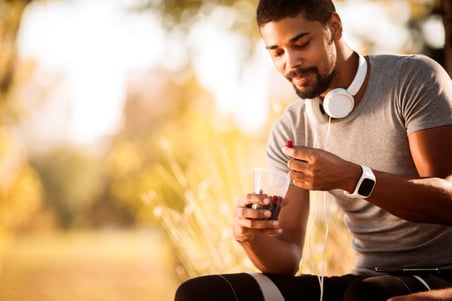 These past few weeks have been trying times for not only our families and friends, but also for the athletes we engage with on a daily basis throughout the year. In our position we must stay in a lead-by-example mentality. If we let ourselves go during this time, our athletes will notice and do the exact same thing. This is definitely a time of uncertainty and there are a lot of unknowns. Controlling what we can control on a daily basis is what will help not just us personally, but also those around us, to get through and come out of this on top.
These past few weeks have been trying times for not only our families and friends, but also for the athletes we engage with on a daily basis throughout the year. In our position we must stay in a lead-by-example mentality. If we let ourselves go during this time, our athletes will notice and do the exact same thing. This is definitely a time of uncertainty and there are a lot of unknowns. Controlling what we can control on a daily basis is what will help not just us personally, but also those around us, to get through and come out of this on top.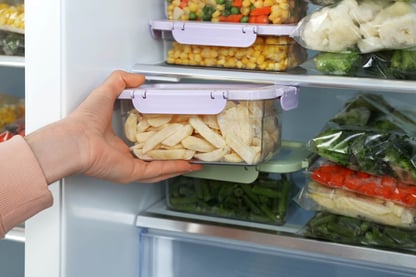 When I say “meal prep,” do you picture hours upon hours in the kitchen, a stockpile of containers, and food that you are sick of by week’s end? PAUSE right there! I am here to tell you that meal prep does not have to be that way. It does not have to be too time-consuming or hard, and you don’t have to eat the exact same meal over and over.
When I say “meal prep,” do you picture hours upon hours in the kitchen, a stockpile of containers, and food that you are sick of by week’s end? PAUSE right there! I am here to tell you that meal prep does not have to be that way. It does not have to be too time-consuming or hard, and you don’t have to eat the exact same meal over and over.  Daily, life provides countless learning opportunities that, if processed properly, can make us strong individuals capable of accomplishing extraordinary things. Some lessons stem from positive experiences in our lives, but I think the strongest lessons are derived from strife, hardship, and even failure. These lessons can hurt, and you can either live in the pain or learn from it. We are currently living a life full of learning opportunities that have and will continue to test our ability to grow.
Daily, life provides countless learning opportunities that, if processed properly, can make us strong individuals capable of accomplishing extraordinary things. Some lessons stem from positive experiences in our lives, but I think the strongest lessons are derived from strife, hardship, and even failure. These lessons can hurt, and you can either live in the pain or learn from it. We are currently living a life full of learning opportunities that have and will continue to test our ability to grow.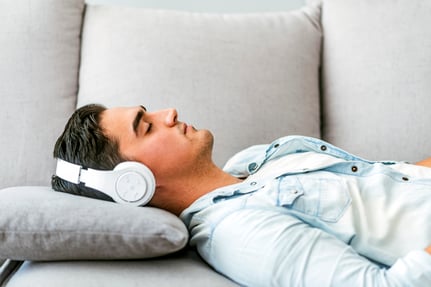 Personal trainers are people, too (well, at least when no one is looking!). In reality, there are a lot of new bridges we, as a society, are crossing every single day. As a trainer, my goal is to put all my effort into making sure that my clients are being healthy with fitness and wellness as a priority. With the lockdown upon us, finding new ways to get this job done is a challenge, but so is making sure that you are finding time for yourself.
Personal trainers are people, too (well, at least when no one is looking!). In reality, there are a lot of new bridges we, as a society, are crossing every single day. As a trainer, my goal is to put all my effort into making sure that my clients are being healthy with fitness and wellness as a priority. With the lockdown upon us, finding new ways to get this job done is a challenge, but so is making sure that you are finding time for yourself.  Can we just cut out the term “cheat meal” already? This fuels the idea that foods are “good” or “bad,” and, in turn, our food choices then become this reflection of us, as humans, being “good” or “bad.” News flash, you are not “bad” for eating a specific food.
Can we just cut out the term “cheat meal” already? This fuels the idea that foods are “good” or “bad,” and, in turn, our food choices then become this reflection of us, as humans, being “good” or “bad.” News flash, you are not “bad” for eating a specific food.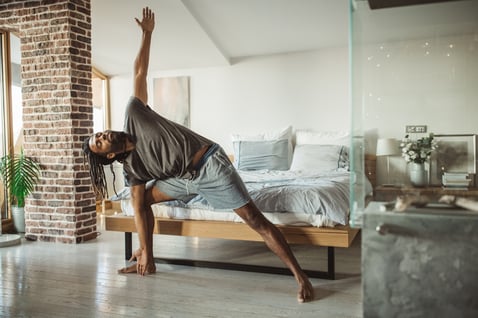 There are no definitive right answers on how we are supposed to individually succeed during a pandemic. We all cope, struggle, and win the day in our own ways. We can all feel a little lost and confused at times, and that’s completely normal as we cross bridges into territory we have never experienced in our lives.
There are no definitive right answers on how we are supposed to individually succeed during a pandemic. We all cope, struggle, and win the day in our own ways. We can all feel a little lost and confused at times, and that’s completely normal as we cross bridges into territory we have never experienced in our lives.  When you hear about fitness and wellness, one of the first things that comes to mind is getting a workout, usually at a gym, fitness center, or club. Some people can get exercise in other ways, such as outdoor activities and sports, while many others receive plenty of fitness at the workplace (think lumberjacks, steel workers, and factory workers). If none of these sounds like you or if you and you feel as though the fitness route is a tough road to travel, there is hope. There are things you do in your everyday life that give you an opportunity to burn calories.
When you hear about fitness and wellness, one of the first things that comes to mind is getting a workout, usually at a gym, fitness center, or club. Some people can get exercise in other ways, such as outdoor activities and sports, while many others receive plenty of fitness at the workplace (think lumberjacks, steel workers, and factory workers). If none of these sounds like you or if you and you feel as though the fitness route is a tough road to travel, there is hope. There are things you do in your everyday life that give you an opportunity to burn calories.